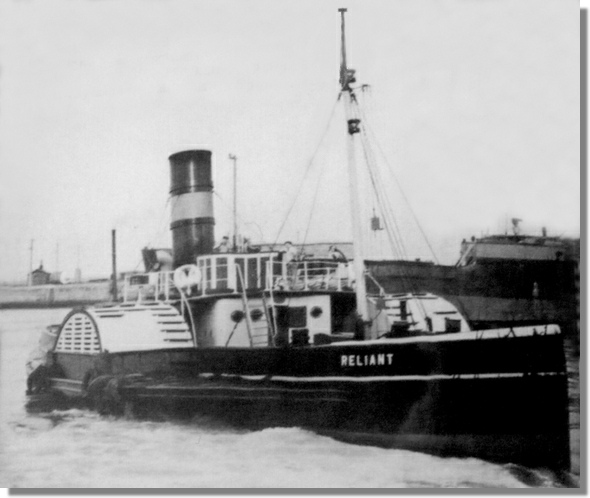
The tug was previously called ‘Old Trafford’ and was built in 1907 by Joseph Eltringham of South Shields for the Manchester Ship Canal Co.
It was fitted with two surface-
Steam was produced by two coal-
The paddle wheels were fitted with 'feathering floats' (ie paddle blades), which allowed the angle of the floats to alter so that they entered and left the water in a vertical postion. This made them more powerful than the 'fixed float' paddle wheels, which had to force themselves into and out of the water at an angle.
In 1951 it was sold to France Fenwich Tyne and Wear Co. and renamed the ‘Reliant’ and worked on the river Tyne for the next 5 years.
In 1956 it was sold to the Seaham Docks & Harbour Co., in County Durham, where it worked until 1969, guiding ships into the narrow harbour entrance. ‘Reliant’ was taken out of service in that year and was towed to Charlton, on the river Thames.
The vessel was dismantled and then re-
The starboard engine has been refurbished and put back on display in the N.M.M. It is driven by a 40hp electric motor through a 60:1 gear unit.
The port engine is now fully restored, together with paddle wheel and working feathering gear, at Markham Grange Steam Museum. Since the engine cannot be steamed it is turned over by electric motor.
Tug Details:
Displacement of 100 tons
Length of 100 ft. (31 metres)
Width over paddles of 36.5 ft. (11 metres)
Beam of 20 ft. (6 metres)
Draught of 7 ft. (2.25 metres)
